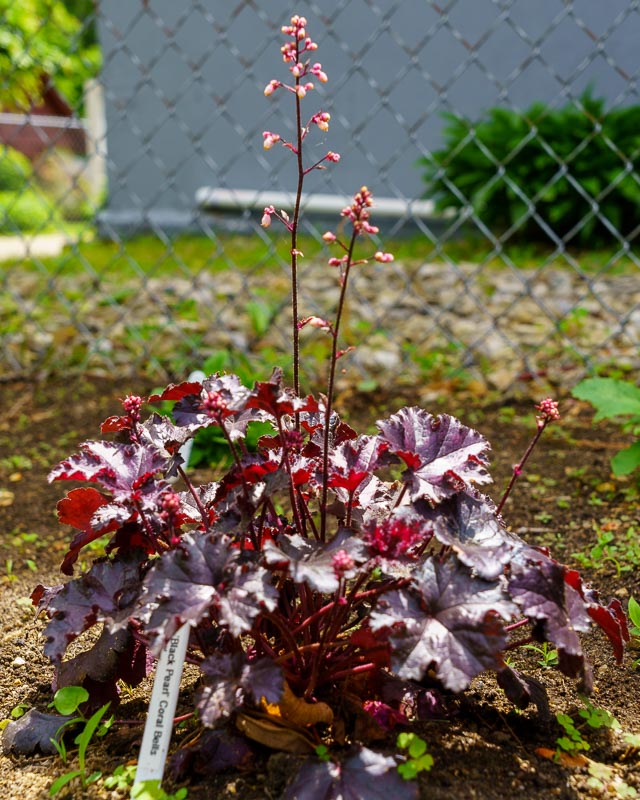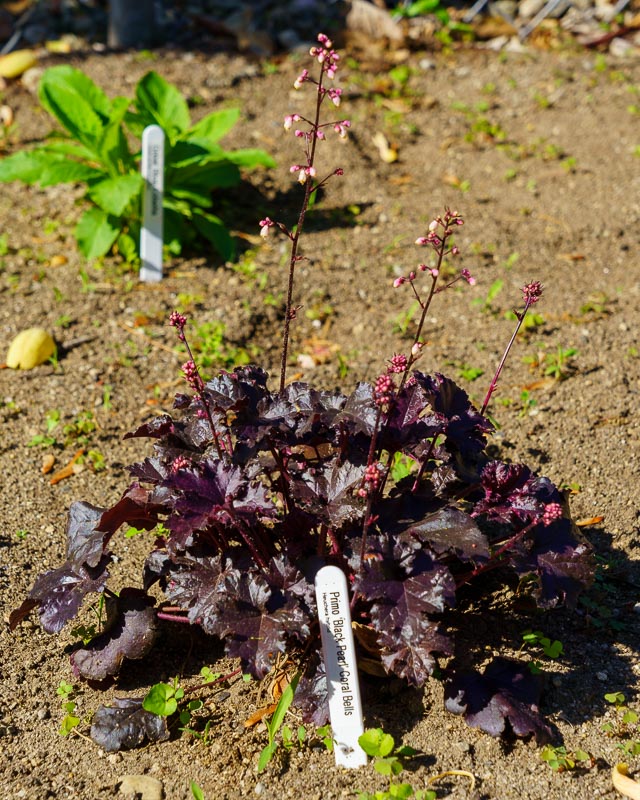Primo 'Black Pearl' Coral Bells
| Attribute | Value |
|---|---|
| Common Name | Primo® 'Black Pearl' Coral Bells |
| Botanical Name | Heuchera hybrid |
| Mature Size | 8’ - 10” tall and 18” - 20” wide |
| Sun Exposure | Full sun, partial shade |
| Soil Type | Rich, moist but well-drained |
| Soil pH | Neutral to acidic |
| Bloom Time | Summer |
| Flower Color | Pink, White / black foliage |
| Care | Coral bells make wonderful edging plants and put on a show when planted in groups. Their foliage is vibrant and saturated and is great for playing up the colors of nearby flowers in the garden—darker purple leaves can make yellow flowers glow, while butterscotch-colored leaves can bring out the tones of simple green leaves. Caring for coral bells plants is pretty straight forward, and you likely won't need to amend anything or prep in any serious way for their arrival in your garden. They like moderate moisture and will do well in partial shade, which is good news if you have a landscape filled with large shade trees. |
| Soil | Coral bells prefer a humus-rich soil with a neutral to slightly acidic soil pH, somewhere between 6.0 and 7.0. Good drainage is a must, especially in shaded areas, as sitting in the damp soil will cause the crown of the plant to rot. |
| Water | This plant has medium water needs and likes consistently moist soil. Established plants will tolerate some drought, but an inch of water per week is the best way to keep them happy. If you grow your coral bells in full sun, plan to give them extra water—their shallow roots will need extra moisture during hot, sunny days. |
| Temperature and Humidity | Most coral bells are hardy in USDA hardiness zones four through eight, although exact hardiness does depend on the variety you're growing. |
| Fertilizer | Feed coral bells in the spring with a half-inch layer of compost or a light amount of slow-release fertilizer. This plant has light feeding needs; you should avoid heavy applications of quick-release fertilizers, as this will inhibit flowering. Container-grown coral bells benefit from feeding with a water-soluble fertilizer to replenish nutrients that leech from the soil. |
| Pruning | While coral bells don't need much maintenance, you can cut back the entire flower stalk after flowering to put the plant's energy into growing more leaves. Coral bells are short-lived perennials, so you'll want to divide the plants every three to five years in the early spring or fall to keep them healthy. If the leaves get a bit ragged looking, especially after winter, cut them back and new growth should fill in quickly. |
| Overwintering | In cold areas, coral bells crowns can heave above the soil line in the winter. Winter mulching will help prevent the freezing/thawing cycle that pushes the plants up, and you should check periodically to make sure the roots are not exposed. |
| Source | https://www.thespruce.com/growing-coral-bells-heuchera-1402032 |

